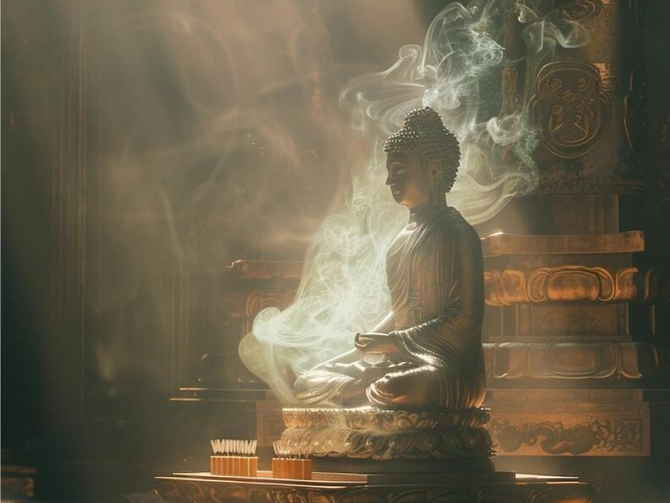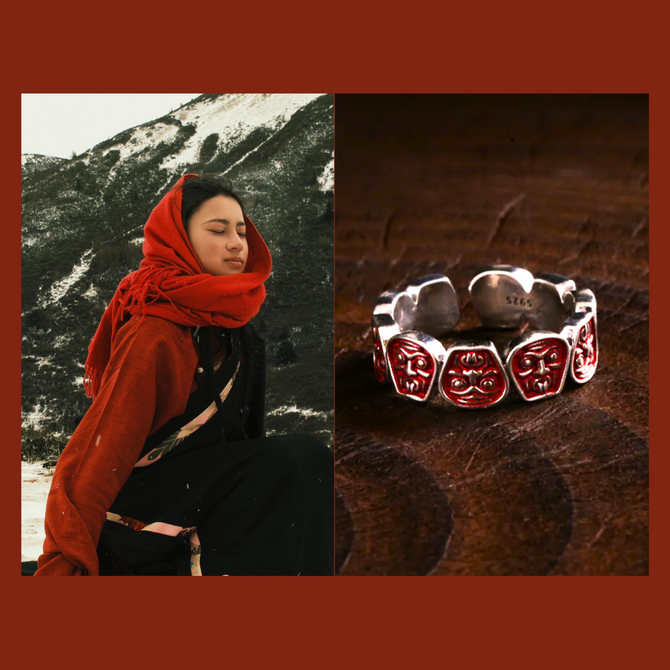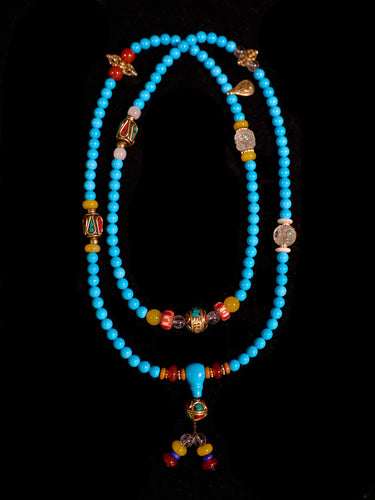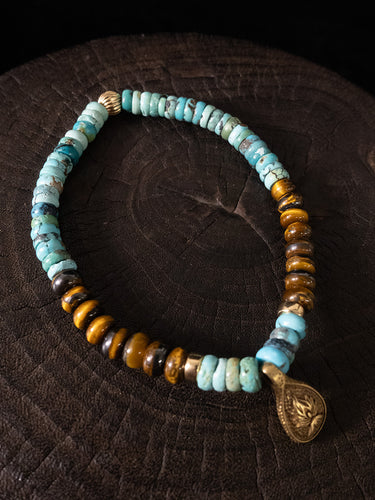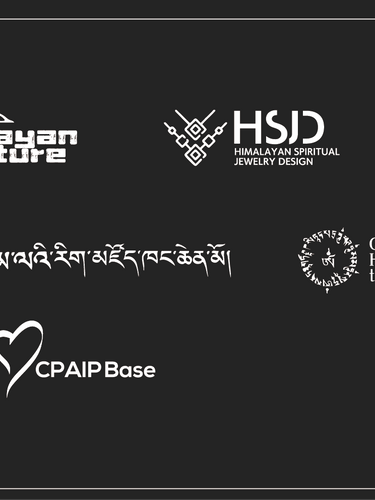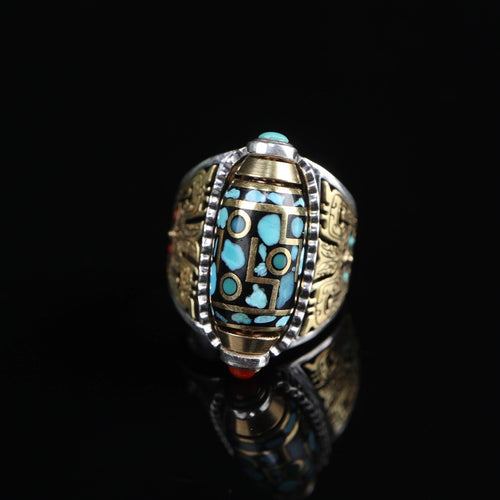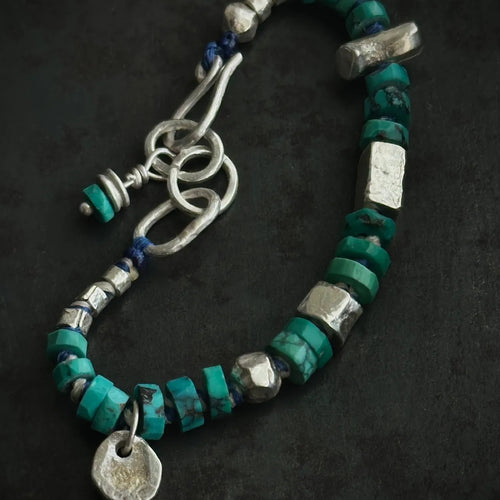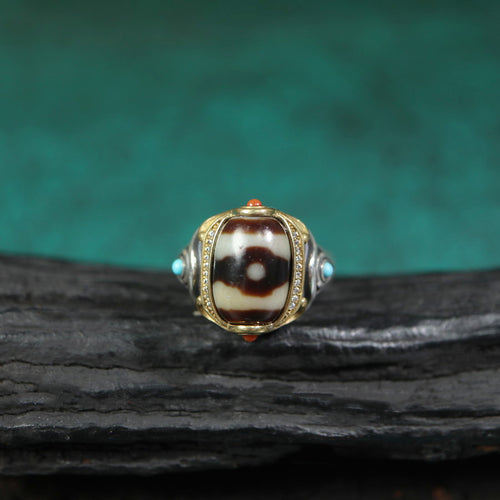
A Sacred Object Across Time: Born of Ritual, Carried by Generations, Awakened Again
There are objects that age, and then there are objects that accumulate time. The 19th-century copper Vajra of Mahakala, discovered within the sacred compound of Sakya Monastery, is not simply an artifact—it is a vessel of lineage. Carried across generations, prayed over by masters, and infused with mantra, this Vajra is a sacred tool shaped not only by hands, but by devotion.For over a hundred years, this Vajra has stood witness to the silent persistence of spiritual practice. It has absorbed the rising smoke of countless butter lamps, felt the breath of monks whispering ancient syllables into the morning air, and remained steady while outer empires rose and fell. It has crossed wars, revolutions, and the quiet passing of time, not as a forgotten relic—but as a presence. Now, it surfaces again—not polished for glory, but glowing from within. Its voice has not faded. It only waited for the one who could hear it.
The Story That Breathes Within It
The Vajra was born in the late Qing Dynasty, during a time when Tibetan ritual craftsmanship reached exceptional heights—an age when objects were not mass produced, but spiritually commissioned. Its place of origin, the Sakya Monastery, is one of Tibet’s most rigorous tantric centers. Within its walls, Mahakala is not decoration. He is guardian, gatekeeper, and living energy. This Vajra sat on an altar not of ceremony alone, but of daily spiritual labor—of fire pujas before dawn, of wrathful sadhanas recited in candlelight, of moments when the line between the physical and the spiritual was thread-thin.Generation after generation, spiritual masters invoked Mahakala through this Vajra, their voices layering into the copper over decades. Like a singing bowl retaining the hum of its final strike, this Vajra holds the echoes of those who came before—carrying their intentions, their compassion, their fierce clarity. It is, in every sense, a continuation of their work.
The Face of Wrath, The Form of Compassion
At its summit stands the two-armed Mahakala, his face rendered in high relief, eyes wide, mouth open—not in cruelty, but in disruption. He challenges illusion. He breaks delusion. With fangs bared and three eyes burning, he is a reminder that not all compassion is soft—some arrives as fire. Snakes coil around his arms and chest, signifying the transformation of greed and ego. A Kapala rests in one hand, a flaying knife in the other—each a ritual symbol not of violence, but of awakening.He is crowned with the Five Skull Treasure Diadem, carved with precision and balance. His body is not symbolic—it is anatomically honest, muscular and taut, sculpted by someone who understood that wrath, like truth, is physical.
Below, the Blade of Light
Emerging from the snarling mouths of the three-faced Makara, a rare cold-iron triangular blade pierces downward. Unlike the five-pronged Vajras of peacetime ceremony, this blade is meant to cut—through ignorance, through fear, through layers of the false self. It is not symmetrical, it is directive. It does not ask—it insists.This Vajra does not symbolize; it acts. It doesn’t mirror the user—it confronts. When held in meditation, it pulls the practitioner into stillness not through peace, but through focus. It is not for everyone—but for those on the edge of true transformation, it is the exact blade required.
A Soul Object, Waiting for the Next Chapter
There is a Tibetan belief that some objects are “soul-bound”—not to a person, but to a mission. This Vajra is such an object. It was created not to remain in one time or one place, but to travel through epochs, carrying the weight of sacred intention with it.For over a century, it has rested in silence. But silence is not emptiness. Silence is potential.It is not coincidence that you are reading this now.
It is resonance.
Kailash Energy as Guardian, Not Merchant
When this Vajra arrived at Kailash Energy, we did not list it. We listened to it. It was not handled like a product, but like a sacred transmission. We consulted monks connected to Sakya lineage, confirmed its ritual style, and offered incense—not to bless it, but to acknowledge it. We do not place such objects in storage. We place them in silence, until they speak.And when they speak, we do not sell—we pass them on.
Conclusion: A Flame That Never Burned Out
This Vajra is a testimony—not to history, but to living energy. It is a tool for the soul, a relic that refuses to retire, a fire that has not burned out. It does not exist to impress, but to awaken. It does not need an owner—it needs a responder. And when that person arrives, the Vajra will not resist. It will recognize.If it calls to you, then it always has. And now, at last, you can answer.



